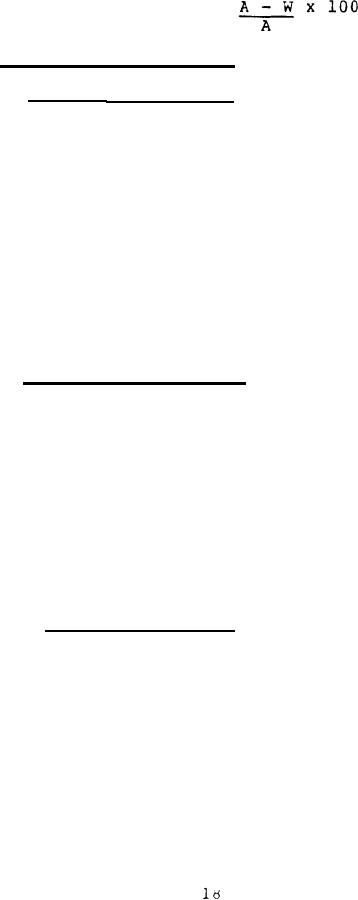 |
|||
|
|
|||
| ||||||||||
|
|  MIL-C-48868E (AR)
Percent (%) Total Volatiles =
4.5.1.3 Analytical procedure.
4.5.1.3.1 Solvent extraction. Using a tared, extracoarse,
sintered glass thimble, extract each sample from 4.5.1.2, with
methylene chloride, for a minimum of 16 hours in a Roweg
extractor (MIL-STD-286 Method 104.1.3). Evaporate the extract
to dryness, using a current of clean, dry air. This extract is
to be used for diphenylamine determination in 4.5.1.3.2. Dry
the residues (non-extractable material) in the extraction
thimbles by aspirating the thimble and contents until the odor
of methylene chloride is not discernible. Dry the thimble plus
residue for 1/2 hour minimum at 100 2C. Cool in a
desiccator (1/2 hr. min.). Determine the dry weight of this
residue (Weight C) to the nearest 0.2 mg. as the difference
between this weight and the weight of the empty thimble. This
residue is to be used for the nitrocellulose determination in
4.5.1.3.3.
4.5.1.3.2 Diphenylamine (DPA). To the dried extract from
4.5.1.3.1 add 50 milliliters (ml.) of glacial acetic acid. If
necessary, warm slightly to dissolve the extract, then cool to
room temperature. Complete the determination of diphenylamine
in the solution according to Method 201.1.4 (starting with
paragraph 5.5) of MIL-STD-286 except that 25 ml. of methylene
chloride is to be added after addition of the potassium iodide
solution.
When the end point appears to have been reached,
(absence of blue color) the flask is stoppered and shaken. If
no color appears, the end point has been reached; otherwise,
continue titration until the blue color is discharged and shak-
ing produces no further color. Calculate the percent DPA as
shown in MIL-STD-286, Method 201.1.4, paragraph 5.13.
4.5.1.3.2.1 Alternate method. Cut 1.0 to 1.1 grams of
sample in to 1/4 inches squares or smaller. Dry in microwave
moisture analyzer. Transfer the dried sample to a weighing
bottle. Cool the sample to room temperature in a desiccator
and weigh. Transfer the sample to a square homogenizing
beaker. Reweigh the empty weighing bottle. The sample weight
is equal to the total weight minus the weight of the empty
weighing bottle. Add 50 ml of 90% methanol to the square
beaker. Agitate the sample/solvent mixture in the hot
ultrasonic bath for 10 minutes. Homogenize the mixture using a
Binkmann homogenizer (or equivalent) for 2 minutes or until the
sample is completely defiberized. Transfer the mixture to a
filtering apparatus fitted with a suitable filter paper.
|
|
Privacy Statement - Press Release - Copyright Information. - Contact Us |